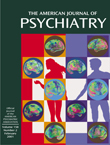Well into The Marriage Clinic, Dr. Gottman, clarifying his philosophical approach to marriage and the promise of marital therapy, makes two statements that grabbed my attention: “I am a ‘plumber,’ not an idealist or a theologian” (p. 184) and “I like to think of myself as a kind of quantitative Studs Terkel” (p. 185). It is sentences like these, and their humanistic underpinnings, that make this superb book so enjoyable.
Humility aside, Dr. Gottman is a prolific and world-renowned researcher and clinician in the field of marital therapy. The Marriage Clinic is the latest of more than two dozen books, videotapes, and audiotapes that he has produced for mental health professionals and couples. This book is the product of his prospective and ongoing research with more than 700 couples whom he has studied at the University of Washington in Seattle, where he is William Mifflin Professor of Psychology.
The book is divided into three sections. Part 1, Research and Theory, begins with a frank exposition of the myths of what marital therapy can and cannot do. Citing high relapse rates in couples within a year or two of treatment, Dr. Gottman calls for a more scientific and rigorous approach to marital therapy outcome research and decries reliance on therapist ratings and customer satisfaction alone. He explains his theory of the core triad of balance in marriage, which includes interactive behavior, perception, and physiology. Of his so-called Four Horsemen of the Apocalypse—criticism, defensiveness, contempt, and stonewalling—contempt is a significant predictor of divorce and is essentially zero in stable and happy marriages. In this section, Dr. Gottman also describes what he means by the sound marital house: marital friendship and its ability to create positive affect in nonconflict contexts; positive sentiment override, which facilitates repair during conflict discussions; conflict regulation, i.e., the ability to establish dialogue with perpetual problems, to use basic skills, and to offer physiological soothing; and the ability to create a shared meaning system.
In part 2, Assessment, Dr. Gottman builds on this introduction and infrastructure and explains in great detail how he assesses couples when they come for therapy. In addition to interviews (both conjoint and individual), he uses a number of questionnaires, which are all included in the appendixes to the book. This second section is particularly rich. There is a chapter dedicated to illustrating the particulars of the sound marital house theory and the ways in which couples handle their challenges masterfully or disastrously.
Part 3, Intervention, makes up the second half of the book. There are several chapters covering important clinical aspects: setting realistic goals with couples; promoting dyadic interaction and monitoring one’s own activity as a therapist; striving for a largely positive affective experience in therapy; recreating and reinforcing the marital friendship; assisting couples with problem-solving; explaining and helping couples to understand and work with perpetual conflict; dealing with resistance and eschewing diagnostic labels of personality pathology; helping couples to avoid relapse (which includes establishing rituals of emotional connection and a follow-up appointment 3 to 6 months after treatment ends); working with emotion, emotional discrepancy, and myths about gender differences in couples; and helping parents to reach out to their children in the face of marital conflict.
There is much here for practicing psychiatrists wishing to enrich their couples’ therapy. Each chapter begins with a synopsis, and there are many interesting case vignettes (both descriptive and prescriptive), a bounty of questionnaires and checklists, and a comprehensive reference list. Most important, Dr. Gottman’s writing is both scholarly and engaging. This book is highly recommended.

